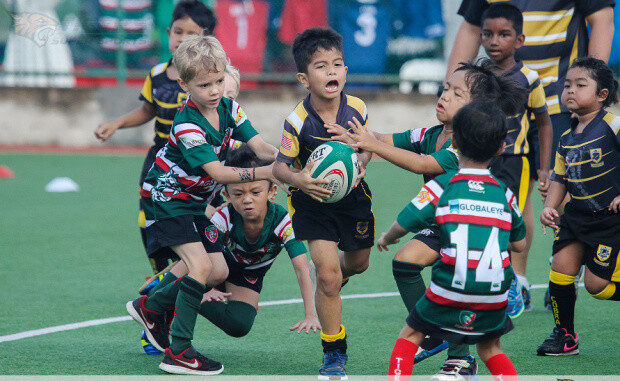
Introduction
Rugby Union is a sport that has captivated the hearts of millions around the world, and its influence extends far beyond the professional ranks. As the sport continues to grow globally, its impact on youth sports programs has become more pronounced. Rugby Union teaches not only athletic skills but also important life lessons such as teamwork, discipline, and resilience. In this post, we will explore how Rugby Union has shaped and continues to shape youth sports programs worldwide, inspiring young athletes and contributing to their development.
1. Rugby Union as a Gateway to Personal Development
Building Character and Discipline
Rugby Union places a strong emphasis on personal growth, with young athletes learning important life skills on and off the field. Rugby coaches often focus on instilling values such as respect, leadership, and perseverance. These values are critical in the development of a young player’s character and help them in their personal lives as well as in sport.
- Discipline: The structured nature of rugby training and games teaches youth athletes the importance of commitment and time management.
- Respect: Players learn respect for their teammates, coaches, and referees, reinforcing positive behaviors both on and off the pitch.
Mental Toughness and Resilience
Rugby is known for its physical demands, which require players to build mental toughness. Youth programs help athletes understand the importance of perseverance in the face of adversity, encouraging them to keep pushing even when they face challenges. This resilience is a key takeaway from rugby, helping players grow stronger both mentally and physically.
2. Expanding Rugby’s Reach in Youth Sports
Grassroots Programs and Global Growth
Rugby Union has successfully expanded its footprint in youth sports programs worldwide. Through grassroots initiatives, Rugby Union organizations have introduced the sport to young people in countries that traditionally did not have strong rugby programs. These initiatives help establish rugby as a sport for all, regardless of background or location.
- School Programs: Many schools, especially in rugby-heavy nations, now offer rugby as part of their physical education curriculum. In countries like New Zealand, South Africa, and England, this helps children from an early age develop their skills and love for the game.
- Youth Rugby Clubs: Rugby clubs around the world focus on youth development, offering training sessions for children of all ages. These clubs act as the foundation for local talent and often help players move into more competitive levels of the sport.
Cultural Impact and Inclusivity
Rugby Union has shown great success in embracing players from various cultural and socio-economic backgrounds. In countries where rugby was not previously widely played, youth programs are helping to break down barriers and promote inclusion. These programs teach young players the values of fair play, unity, and respect, contributing to a culture of diversity within the sport.
3. The Benefits of Rugby Union for Youth Physical Fitness
Improving Physical Health
Rugby is a highly physical sport that requires a range of skills, including strength, agility, speed, and endurance. Through rugby programs, young athletes develop and improve their overall fitness levels.
- Cardiovascular Health: Rugby’s dynamic nature improves cardiovascular endurance, as the game demands frequent bursts of speed and agility.
- Strength and Coordination: Tackling, running, and passing the ball require players to develop strong, coordinated movements. Rugby training sessions focus on strengthening the entire body.
Multi-Sport Athletes
While rugby is an intense and demanding sport, it also benefits young athletes who participate in other sports. Many rugby players excel in other physical activities due to the transferable skills they acquire in rugby, such as hand-eye coordination, spatial awareness, and strategic thinking.
- Cross-Training: The agility and strength required in rugby make it a beneficial cross-training activity for athletes in other sports, such as football, basketball, and athletics.
4. Rugby Union Promoting Teamwork and Leadership Skills
Collaboration and Teamwork
One of rugby’s core principles is teamwork. It is a sport where success depends on the collective effort of every player. In youth programs, children quickly learn that each team member’s contribution is crucial to the success of the team. Rugby teaches kids how to communicate, collaborate, and support each other on and off the field.
- Shared Responsibility: Each player has a defined role, whether in attack or defense, and this shared responsibility builds a sense of unity.
- Adaptability: Rugby players learn to adapt to different game situations, often relying on their teammates to cover different aspects of the game.
Developing Leadership Skills
Rugby programs encourage leadership from an early age. Young players are given opportunities to captain their teams, lead by example, and motivate their peers. Rugby’s emphasis on collective effort and personal responsibility provides young athletes with the foundation to become strong leaders in all areas of life.
- Leadership Development: Youth rugby clubs and schools focus on empowering players to lead, instilling qualities such as accountability and decision-making in high-pressure situations.
5. Rugby Union and Social Responsibility in Youth Sports
Promoting Social Good
Rugby Union has a strong tradition of supporting community outreach programs and social initiatives. Youth rugby programs often focus on teaching young athletes about social responsibility, encouraging them to give back to their communities.
- Youth Mentorship: Many youth rugby programs involve older players mentoring younger ones, helping foster a sense of community and support.
- Community Engagement: Rugby clubs around the world partner with local charities and organize events to raise awareness for important causes, teaching young players about the importance of contributing to their communities.
Addressing Social Issues
In addition to physical and mental development, rugby’s social impact cannot be understated. Programs aimed at youth often encourage inclusion, gender equality, and respect for diversity. Rugby is a powerful tool for combatting bullying and promoting positive social values, creating a culture of inclusivity for young players.
6. Rugby Union’s Role in Shaping Future Professional Athletes
Pathways to Professional Rugby
For many talented young athletes, youth rugby programs provide a direct pathway to the professional level. These programs identify and nurture promising players, giving them the opportunity to compete at regional and national levels.
- Talent Identification: Rugby organizations often scout youth players through academies and developmental teams, helping them make the leap into professional careers.
- Scholarships and Support: Many rugby clubs and universities offer scholarships to talented players, providing them with the opportunity to play at higher levels while gaining an education.
Success Stories
Numerous professional rugby players around the world began their careers in youth programs. These success stories serve as inspiration for young athletes and demonstrate the potential for rugby to provide opportunities both on and off the field.
Conclusion
Rugby Union’s influence on youth sports programs worldwide is profound and far-reaching. From teaching essential life skills like discipline, teamwork, and leadership, to providing opportunities for physical and personal development, rugby plays an important role in shaping the lives of young athletes.
As rugby continues to grow globally, its impact on youth sports programs will only increase, helping to build stronger, more inclusive communities. Through its combination of physical rigor and character-building values, Rugby Union remains a transformative force in the world of youth sports, inspiring the next generation of athletes to reach their full potential.



Leave a Reply